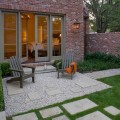What Shrubs work good for Formal Gardens?
A formal garden is defined by clean lines and symmetry. It is typically square or rectangular in shape, and it has entrances in either the sides or the corners that lead into its central interior. Shrubs for formal gardens reinforce the ordered balance of the form in a variety of ways.
One of the defining features of formal garden vegetation is the symmetry of the plants themselves. Branches and leaves must be evenly distributed as part of the natural growth of the plant. Even without pruning, vegetation must have a balanced look to it in order to look like it belongs in any kind of formal design.
One of the more popular categories of shrubs for formal gardens is the boxwood family. There are actually 70 different species of boxwoods. Some, like the Dwarf English Boxwood, are small plants that are ideal for accenting the walkways that run through the center of the garden. They also make excellent borders for central garden courtyards.
Others, like the American boxwood, can grow as high as 10 feet. These plants have glossy leaves and very small flowers, which makes them ideally suited for gardens styles like the French form which avoids the use of color in preference for varying shades of green.
A number of other boxwood species can be planted to create varying levels of greenery and vertical impact. Among these varieties are Green Mountain Boxwoods, Green Velvet Boxwood, Variegata, and English Boxwood.
In the event that your yard is heavily shaded, you can still have the garden of your dreams. We can plant shade resistant shrubs for formal gardens that will thrive in limited sunlight. There are a number of species that we can use for this purpose. Evergreen azaleas, skimmia, and scarcoccoa are just a few examples. These are not household names, but almost every picture you have seen of a formal garden in a shaded area probably has at least one of these plant types within it.
Borders are essential to creating the symmetry that characterizes formal landscaping. Gardens within such a landscape must have clean, recognizable borders that distinguish the garden from the surrounding lawn grasses, trees, and hardscapes. To create these borders, we typically used trained bushes, hedges, and sometimes topiaries to generate the equivalent of an organic wall around the garden interior.
It only takes a few species of shrubs for formal gardens to generate the desired effect. In fact, one of the principles of formal design is a less is more approach to speciation. A handful of carefully chosen plants, carefully placed in the right locations, can be used to create repeating patterns that establish the stately essence of formal design.
Finding shrubs for formal gardens is not a difficult thing for a homeowner to do. However, it is strongly recommended that you let trained professionals choose the species for you. Experienced Houston landscapers plan a garden based upon the known size of fully mature plants. Often, they bring in mature plants so the garden will immediately have the desired impact upon the landscape.

